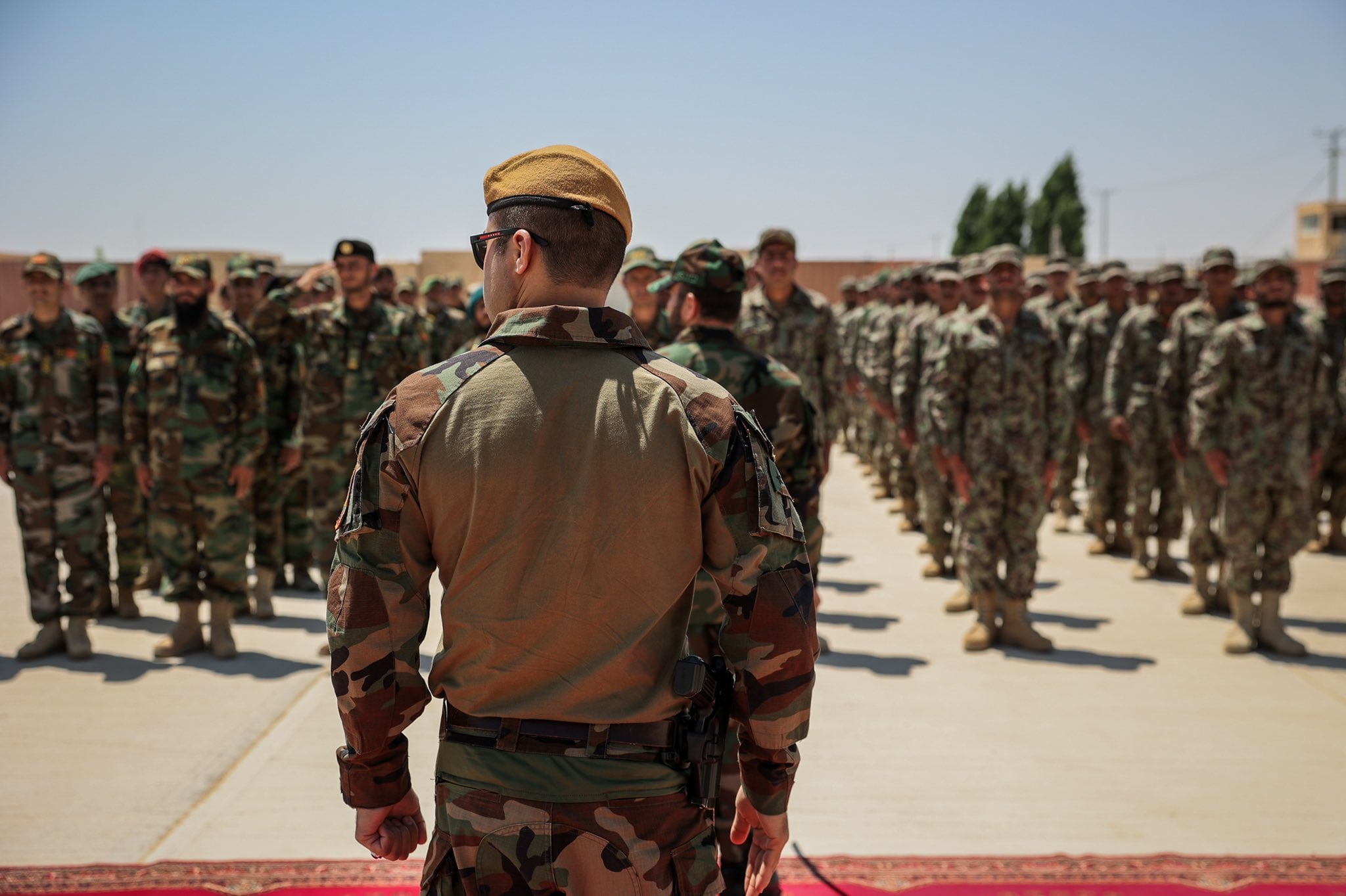From its first days on the flight line, the F-35 Joint Strike Fighter needed to overcome a fame that it was too costly and too delicate.
Detractors complained that the fifth-generation jet couldn’t dogfight in addition to legacy plane, was years delayed and billions over finances and was hindered by finicky software program and an advanced upkeep system.
However when the F-35 confirmed as much as assist pleasant forces in Afghanistan, the response was far totally different.
In his ebook “The Final Commander,” launched this summer time, Afghan Lt. Gen. Sami Sadat offers a first-of-its-kind account of an early F-35 mission, shortly after the jet started deploying to Afghanistan for the primary time.
Sadat, who was the final individual to command Afghan Nationwide Military forces in Afghanistan previous to the autumn of the nation’s authorities — amid the 2021 U.S. army withdrawal — describes a platform so new and secretive it wanted a codename. It additionally displayed a functionality that made his troops marvel.
Whereas Marine Corps F-35Bs flew the platform’s first fight mission in Afghanistan in 2018, coming off the amphibious assault ship Essex to hit a goal in assist of floor clearance operations, the planes would stay a uncommon sight over the nation, with U.S. troops routinely calling on acquainted platforms just like the F-16 Combating Falcon and A-10 Thunderbolt.
However when Sadat and his floor commanders have been working to filter Taliban strongholds in mountainous southwestern Afghanistan within the winter of 2019-20, they discovered themselves in want of a functionality the A-10 couldn’t provide.
Throughout an operation to guard the Salma Dam, situated in Herat province, from Taliban destruction, one detachment of Afghan troops turned caught as they pushed north, Sadat writes in his ebook. Cloud cowl in temperatures plunging beneath zero made it unimaginable to conduct air strikes towards the Taliban utilizing U.S.-supplied A-10s.
“That’s once we made the primary use in Afghanistan of a weapon which might give us a big benefit in winter combating,” Sadat remembers.
He described a dialog with U.S. Air Pressure Maj. Michael Martin, then deputy commanding common of Particular Operations Joint Process Pressure-Afghanistan. Martin stated he had entry to a airplane that might clear up Sadat’s issues.

“Sami, I can’t inform you the kind of plane we’re using, however it could bomb precisely by clouds,” Sadat remembers Martin telling him.
In response, Sadat steered a code title: “Cool Birds.”
The title caught, and a nighttime strike mission was approved. An Afghan main common confirmed grid references and gave the mission verbal assent.
“However he was confused,” Sadat writes. “He may hear no planes. He had no concept of the aptitude of the F-35s.”
Minutes later, he bought a name from the final, shocked that the strike had taken place — as evidenced by loud booms and the disappearance of the Taliban menace — all with out even listening to the stealthy F-35s approaching, Sadat writes.
“And so, by assured patrolling village after village by the snow, allied with probably the most subtle know-how out there on any battlefield, we turned the winter to our benefit,” Sadat’s account reads. The Individuals, he added, “have been glad of the chance to check their functionality in actual circumstances.”
In an interview with Navy Occasions, Sadat, who now lives in northern Virginia, expanded on his story, saying the occasion left an enduring impression on the Afghan troops.
“The affect [the F-35] left on my troopers was wonderful. Like, whoa, , we’ve got this know-how,” Sadat stated. “But additionally the affect on the Taliban was fairly crippling, as a result of they’ve by no means seen Afghan forces transfer within the winter, they usually have by no means seen planes that might bomb by the clouds.”

Sadat stated he was so involved concerning the dangers Afghan floor forces have been taking through the winter operation that it left him with bodily pains in his abdomen throughout missions.
However “the whole lot labored out,” he stated, “in a unprecedented method.”
Some of the heralded options of the F-35 was its distributed aperture system, comprising six sensors across the perimeter of the airplane. Paired with a $400,000 helmet, the system allowed pilots to “see by” the airplane and primarily have a 360-degree view of their environment.
These instruments, in response to the Air Pressure, allow “optimistic goal identification and precision strike in all climate circumstances.”
As for the Afghan army forces, regardless of what Sadat describes as a collection of victories towards the Taliban in 2019 and 2020, he writes that ahead momentum was hindered by the 2020 Doha Settlement’s peace negotiations with the Taliban.
That settlement, he stated, weakened the Afghans’ offensive functionality and restricted the U.S. army’s capability to assist their missions. Then, when Kabul fell in 2021, Afghanistan’s army scattered and fled.
Sadat is planning a tour for his ebook partly to boost consciousness and assist for the Afghanistan United Entrance, a company he based that’s at present engaged on a technique to beat the Taliban and return the nation to a democratic authorities.




















